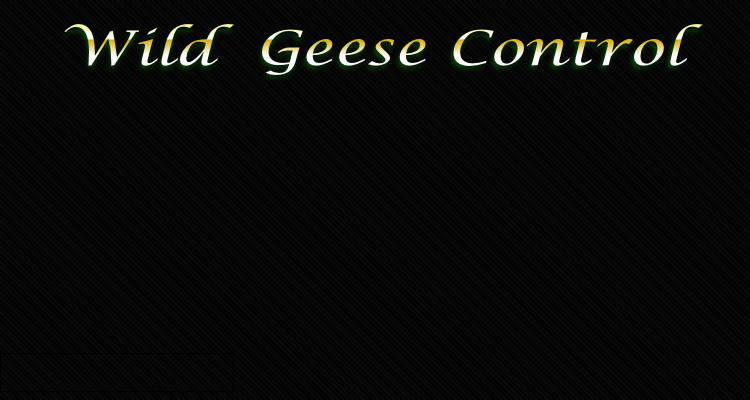Copyright © Wild Geese Control

Call (440) 679-8828
Nuisance Canada Geese Removal using Border Collies


Canada Geese (Branta Canadensis)
The sub-species commonly found to nest, breed and reside in Ohio and other mid-eastern areas of the United States is the giant Canada goose. This sub-species is aptly named with adults weighing upwards of 14 pounds. The United States Fish & Wildlife Service estimates the Mississippi Flyway Giant Population (MFGP) at 1,629,800 as of Spring 2011 (see USFWS Waterfowl Population Status, 2011 report, p. 44). The accompanying graph shows the trend of increasing giant Canada geese in the Mississippi Flyway since the early 1990’s
Why are Canada Geese considered a nuisance?
Why are Canada Geese considered a nuisance?
|
|
Most obvious are the droppings of 1-3 lbs. per goose per day which deter people from using parks, picnic areas and other recreational sites such as athletic fields and golf courses.
|
|
|
Maintenance people have to spend time and money cleaning up the goose droppings.
|
|
|
Droppings contain nitrogen, bacteria and viruses creating a health concern from which disease may spread to other bird populations.
|
|
|
During nesting, Canada geese can be aggressive and territorial.
|
|
|
Canada geese overgraze lawns, eat crops and trample turf.
|
Federally Protected Canada geese are federally protected under the Migratory Bird Treaty Act of 1918. Birds and their eggs or nests cannot be harmed or destroyed (as well as a host of other actions) without federal and state permits. Fines for misdemeanor convictions under the Migratory Bird Treaty Act can be as high as $15,000. (See Links & Regulations page for additional information.)
Migratory Canada geese Nest and molt in Canada during Spring/Summer and migrate southwards to the US during the Fall to spend the Winter. They may intermix with resident Canada geese during migration period.
Resident Canada geese Nest and molt in US during Spring/Summer and may “micro-migrate” within the same region for the remainder of the year. They will “pond hop” within their nesting region during the Fall and Winter seeking better feeding sites.
Nesting Occurs in Spring with 5-6 egg average clutch. 26-28 day incubation period starting after all eggs are laid so that goslings are born the same day. Only females incubate the eggs, males guard the nest and can be quite nasty in their protection. Nests are built very close to water for food and safety. Nesting occurs at or very near the same site each year. Creating non-desirous nesting sites is key to reducing goose populations. If the nest is destroyed (or eggs removed), they may re-nest.
Molting Complete replacement of adult flight feathers during Summer, coinciding with later stages of gosling development. Molting lasts about one month and during this period the geese are flightless and more vulnerable to predators. Dog hazing during nesting and molting needs to be performed with increased care to ensure flightless adult geese and pre-flight goslings are not harmed.
Diet Primarily herbivores, preferring tender young plants, with an affinity for fertilized lawns! They will also eat grains, cattails, small aquatic insects and snails.
Droppings 1-3 lbs. per goose per day.
Social Style Form strong social bonds with mate and family group. They are monogamous, pairing for life. When conditions allow, they will nest near each other in gang broods of up to approximately 20 birds.

Mississippi Flyway Giant Canada Goose Population 1993-2011
(roll over thumbnail at right with mouse to enlarge)